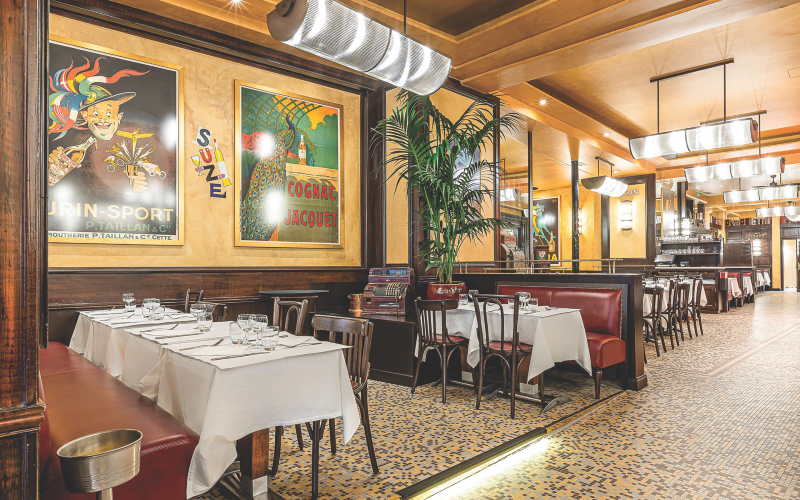Amid the hubbub surrounding the Paris 2024 Olympics, one otherwise unmissable event seems to have fallen off the French public’s radar: le Championnat du monde de l’œuf mayonnaise, or Egg-Mayo World Championship. While not attracting the same media coverage as, say, the 100-meter hurdles, this annual contest is equally competitive and, from an observer’s perspective, culturally more important. It was conceived back in the 1990s by the food critic Claude Lebey to counter the fad for overwrought, over-complex and over-hyped cooking styles – think molecular gastronomy – that had eclipsed traditional cuisine and, in doing so, masked the essential mission of restaurants, which is to feed and nourish.
Lebey was especially concerned by the disappearance of bistros, those honest-to-goodness establishments that had long formed the backbone of simple French cuisine. In the sixty-odd years between 1960 and 2019, the number of bistros across France plummeted from 200,000 to 34,000, according to INSEE, France’s national statistics office. In Paris alone, around 300 shuttered between 2014 and 2018. So dire was the situation that Claude Lebey launched a campaign to revive the bistro and have it recognized by UNESCO as a stronghold of French culinary tradition. To him, the edible symbol of that tradition was the humble œuf mayo, which he deemed “as indispensable to cuisine as the paperclip is to the office.” Simplicity was key. Nothing foraged, deconstructed, or curated; no mouthfeel or micro-seasonality; just plain food, shorn of fancy menu descriptions. (A study by Dan Jurafsky, a professor of linguistics at Stanford University, found that when a restaurant uses longer words to describe a dish, it charges more for that item – an additional 18 cents per letter!)
Whether it’s the efforts of Lebey and his acolytes, the wallet-squeezing effects of soaring inflation, or a combination of both, la cuisine traditionnelle is now back on the menu, so to speak. Anyone visiting Paris or other major French cities in the past couple of years is bound to have noticed the seemingly recent phenomenon of the bouillon, a pocket-friendly, no-frills eatery where a three-course meal costs less than 20 dollars. In the hierarchy of Food-Away-from-Home (FAFH) classification, bouillons sit below restaurants and bistros – FAFH without the faff. But they are certainly not new.
In fact, they date from the 18th century and have more to do with Enlightenment philosophy than fine dining. Although the actual origins are disputed, the consensus view is that the bouillon was invented by Mathurin Roze de Chantoiseau, an economist and disciple of the philosopher Jean-Jacques Rousseau, who believed that the secret to good health was plain, simple food rather than the rich, meat-heavy diet of the aristocracy. The healthiest dish, he said, was a nutritious broth, or bouillon, a word derived from the verb bouillir, to boil. In 1765, Chantoiseau set up a couple of marble-topped tables in a Parisian bakery and invited the hungry public to come and refresh themselves with a steaming bowl of broth. His unique selling proposition was summarized in a Latin tag using the verb restaurare, to restore. The term un bouillon restaurant, or restorative broth, became so popular that the adjective was eventually nominalized and “restaurant” became a place rather than an attribute.

